How to Get from Quito to Cuyabeno Wildlife Reserve, Ecuador
Cuyabeno Wildlife Reserve is one of a few areas where you can visit the Amazon Rainforest in Ecuador. If you’re booking a short stay in one of the lodges within this particular reserve, you might want to have an idea of how you’ll get there. It’s a pretty remote place, so it’ll take some time and multiple modes of transport to reach Cuyabeno Wildlife Reserve from Quito.
In this guide we’ll detail all the options you can choose from to reach the meeting point at Puente Cuyabeno (Cuyabeno Bridge). From this spot all visitors, regardless of which lodge you’re staying in, will have to take a canoe ride down the Cuyabeno River.
If you’d like to see our Amazon Rainforest adventures, then check out our dedicated Amazon video on our YouTube Channel. For more Ecuador videos check out our Ecuador Playlist.
Disclosure: This post may contain affiliate links, which means we may receive a small commission if you click a link and purchase something. Clicking these links won’t cost you anything, but it will help us to keep this site up and running! Learn more about our affiliate policy.
Travelling from Quito to Cuyabeno Wildlife Reserve
When you look at the map, the distance between Quito and Cuyabeno might not look that great. However, the two locations are nearly 400 km (~250 mi) apart. The lodge we stayed at in the Amazon Rainforest is definitely the most remote location we’ve been to so far. It took us a long time and a few different modes of transport to get there.
The journey to Cuyabeno Wildlife Reserve from Quito can be split into two main parts:
- Quito to Cuyabeno Bridge (Puente Cuyabeno)
- Cuyabeno Bridge to your lodge in the wildlife reserve
Below we’ll share a few options for the first part of your journey before we describe the second half, which will basically be the same no matter which lodge you book your stay with.

Cuyabeno Wildlife Reserve Journey Part 1: Quito to Cuyabeno Bridge
The first part of your long journey to the Amazon Rainforest will be to reach a spot called Puente Cuyabeno (Cuyabeno Bridge). Now, you can do that in a few ways which we’ll share below.
Option 1. Organised Transport to Cuyabeno Wildlife Reserve from Quito
You can actually arrange a bus transfer with your lodge from Quito all the way to the Cuyabeno Wildlife Reserve. Some refer to this option as the ‘tourist bus’. This is definitely the easiest and most convenient way to reach the reserve.
You’ll normally get picked up late at night (between 11 – 11:30PM) from one of the meeting points in Quito. Then you can settle in for an overnight bus journey. The bus will normally be filled with fellow travellers heading to one of the lodges within the reserve.
It’s definitely a great option if you don’t want to overthink your travel plans and want to save on a night’s accommodation. Taking the tourist bus will also give you the chance to get to know other travelers who might be staying at the same lodge as you.
The best part of this option is that the bus will go straight to Cuyabeno Bridge. From there you’ll get into a dedicated canoe and will be transported to your lodge.
We actually decided to go with this option on the way back to Quito, and it was much easier (and also cheaper in the end) than taking public buses. On your return journey you’ll get to Quito quite late at night. People will be waiting in Quito to board that same bus for their overnight journey to Cuyabeno, so expect to arrive around 10 – 11PM.
A one way ticket is around $20 USD per person.
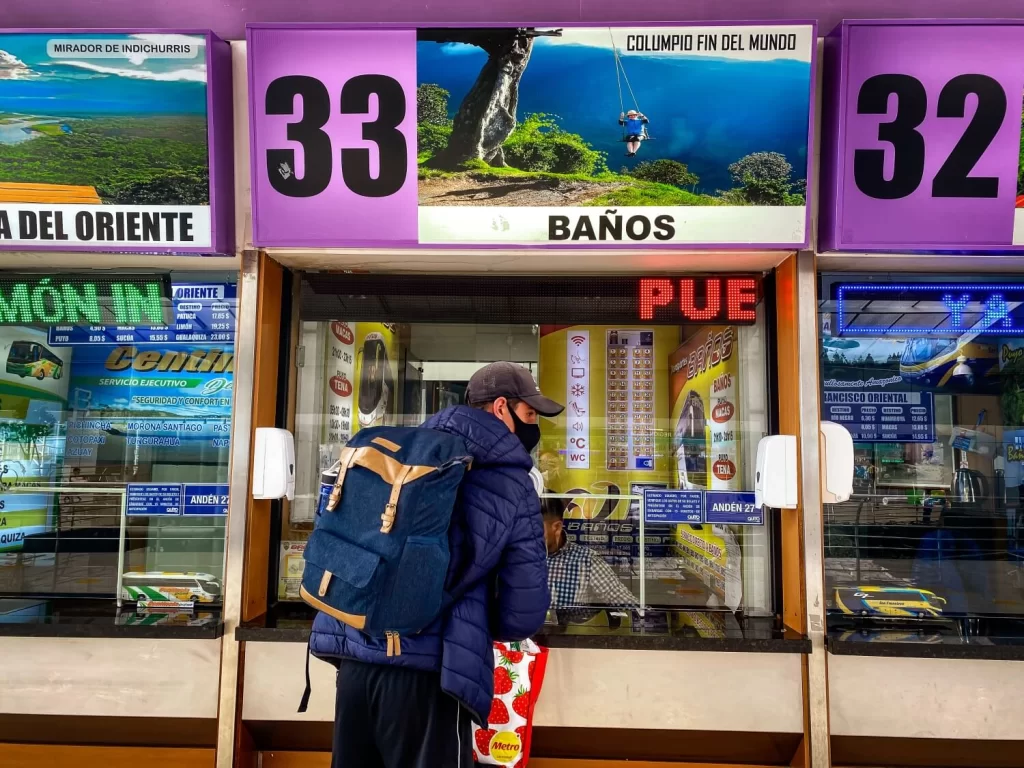
Option 2. Public Bus from Quito to Cuyabeno Bridge
Of course we like to complicate things for ourselves, so we decided to sleep in a bed the night before our arrival rather than on the bus, and get to Cuyabeno Wildlife Reserve in our own way.
Step 1. From Quito to Lago Agrio (Nueva Loja)
If you’d like to reach Cuyabeno Bridge via public buses, then you first need to travel to a place called Lago Agrio (Nueva Loja). To get there, you have to get to Terminal Terrestre Quitumbe, Quito’s South Bus Terminal. You can either take a taxi, Uber or local bus to the station from the city centre. You can read more about how to get around Quito here.
There are two main bus companies travelling to Lago Agrio from Quito: Transportes Baños and Putumayo. We went with the first one. The bus ticket costs $14 USD per person and the journey can take anywhere between 9 to 10 hours or more.
Note that the ticket booth will say ‘Baños’. However, this indicates the bus company’s name, not the destination of Baños in another part of Ecuador. To complicate things even more, there’s actually a place called Loja in the south of the country as well. This is very similar to Nueva Loja which is an alternative name for Lago Agrio. It’s important to double check when you buy your ticket, so you don’t end up in the south of Ecuador.
You’ll probably arrive to Lago Agrio later in the evening, so you’d need to spend a night in town. Make sure to get a taxi from the bus station to your accommodation, which should only cost you a few dollars.
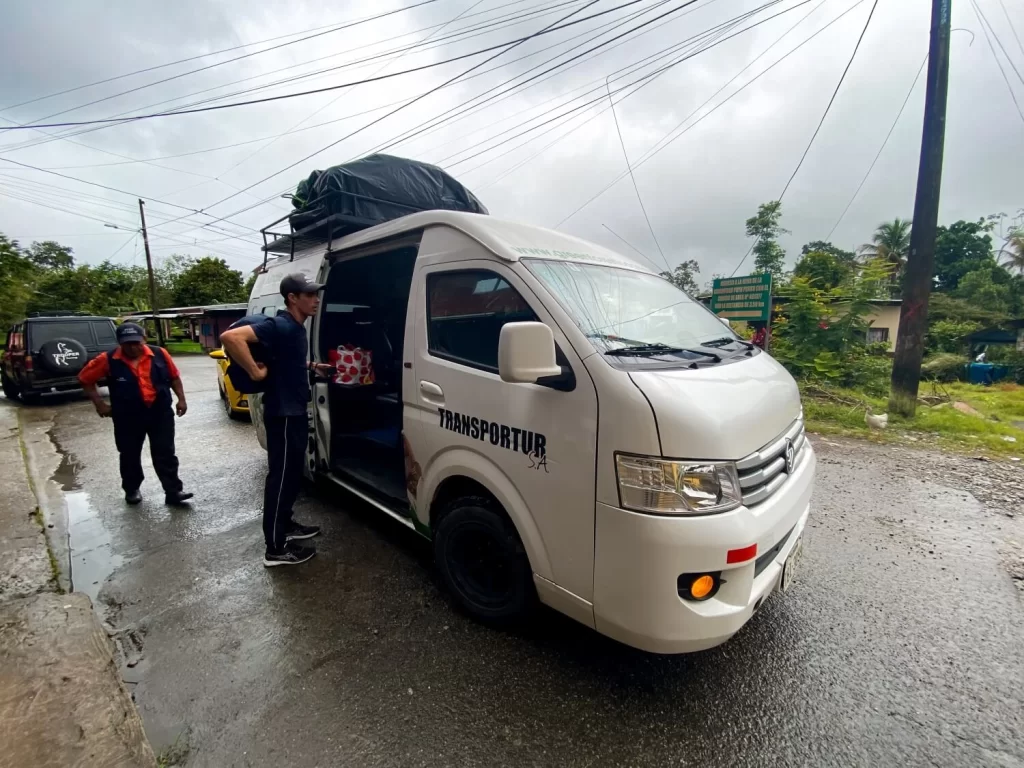
Step 2. From Lago Agrio to Cuyabeno Bridge
Lodges will send a minivan to collect everyone arriving to Cuyabeno Bridge from Lago Agrio. The van ride will take about 2 hours. Again, you’ll meet a few fellow travellers who may be heading to the same lodge as you.
The van will probably drive around Lago Agrio first to collect everyone, but after that the journey will go relatively quickly.
Option 3. Flying from Quito to Cuyabeno Bridge
There’s actually an option to fly from Quito to Lago Agrio. You can fly with Adventure Air but they only fly on Mondays and Fridays.
Whilst this option seems way quicker than spending a day or night on a bus, the flight times might not work out in your favour. Plus, the cost of the flight is pretty high in comparison to the bus options.
It’s also worth noting that you’ll still have to do the nearly 2-hour long minivan ride from Lago Agrio to Cuyabeno Bridge. In addition, if you arrive in the evening, you’ll still have to spend a night in town as well.
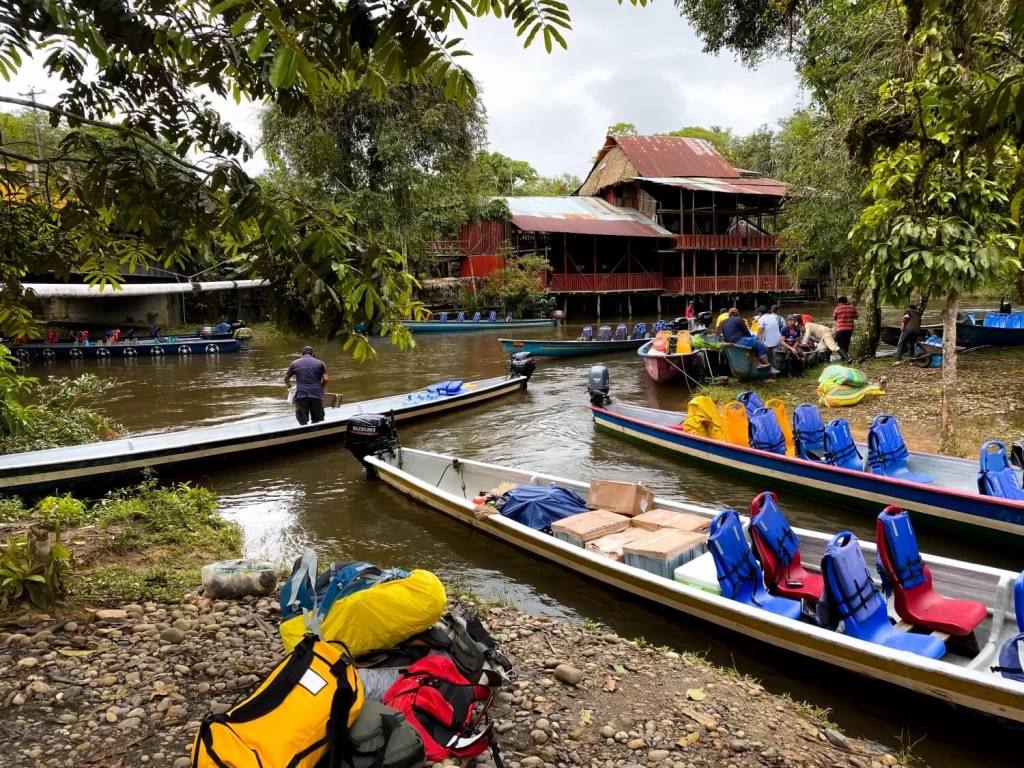
Cuyabeno Wildlife Reserve Journey Part 2: Canoe Ride from Cuyabeno Bridge to Your Lodge
The second part of the journey to your lodge will include a 1.5 to 2-hour long canoe ride down the Cuyabeno River.
Top Tip. Make sure to use the toilet facilities at Cuyabeno Bridge before your canoe ride.
Whilst this canoe ride is basically part of your transfer to Cuyabeno Wildlife Reserve, you’ll simultaneously start your Amazon Rainforest tour on it. You’ll meet your guide and canoe driver at Cuyabeno Bridge before taking a seat in the canoe. The ride itself is normally pretty smooth and you’ll be able to relax whilst taking in the scenery and the fact that you’re in the Amazon Rainforest.
As soon as you start your canoe ride, your guide will also start spotting wildlife. You should be able to identify a few animals such as monkeys as you get deeper and deeper into the reserve. This is actually when we spotted a small anaconda in a tree, which was the only sighting we had of one on the whole trip.
Now, it’s also worth noting that you’re in the Amazon Rainforest which means that it can start pouring with rain at any given moment. You’ll normally get given a heavy duty poncho before your ride. For us it came in super handy, as it started raining heavily about halfway through our journey. It definitely wasn’t pleasant sitting in torrential rain for nearly an hour. Even the water levels in the canoe rose above our ankles so our guide had to start emptying it. It was a ride we’ll never forget.
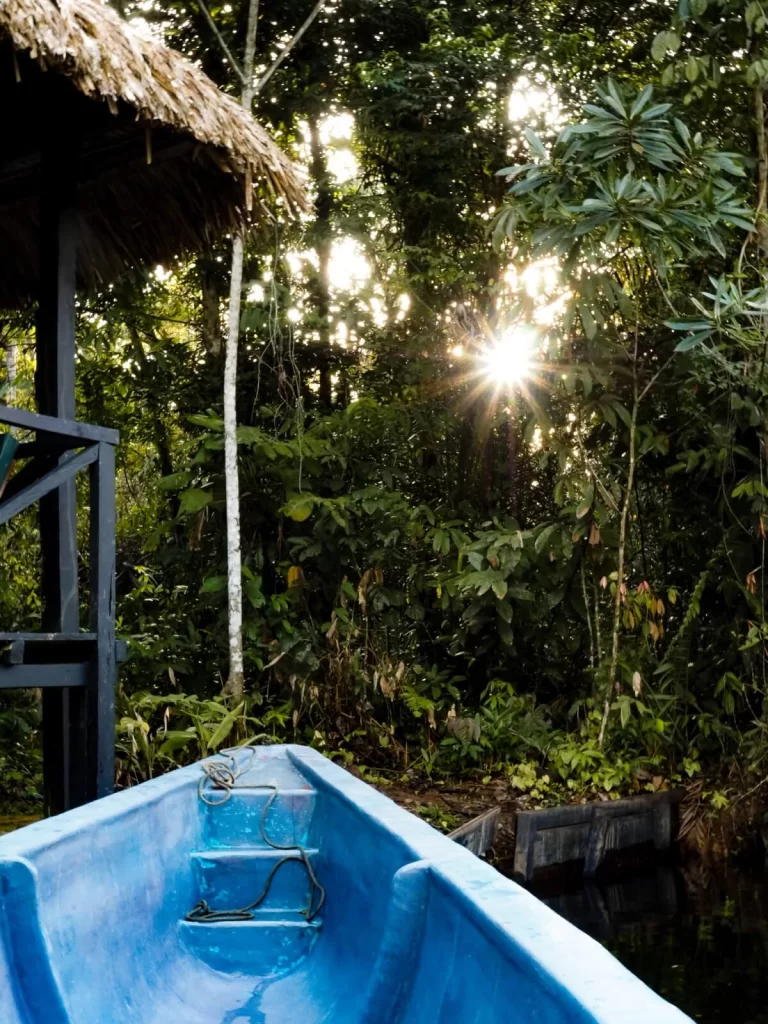

Pros and Cons of the Different Methods of Travel to Cuyabeno Wildlife Reserve
As always each of the above options will have its pros and cons. So let’s run through them quickly.
Taking the direct ‘tourist’ bus will be the cheapest option overall, as you won’t need to spend money on taxi’s to and from the bus stations or book a nights accommodation in Lago Agrio. You’ll also be surrounded by other travellers, so if you travel solo for example, this option can feel safer and more social than the public bus.
Probably the biggest con of this option is the fact that you’ll be spending a night on the bus. You may or may not get much rest and when you get to Cuyabeno Bridge you’ll still have another 2 hours to travel in a canoe before you reach your lodge. There’s probably not going to be much time to relax for the rest of the day either.
Now, whilst you can sleep in a bed the night before if you choose to travel on a public bus to Lago Agrio, it’s definitely a slightly more complicated option. In the end, it won’t even be cheaper than taking the tourist bus. Plus, the bus will only take you to Lago Agrio, so the next day you’ll still have to travel a good 4 or 5 hours before you reach your lodge.
No matter which bus option you go for, you’ll be spending a long time in that vehicle. If you get motion sick easily, then we recommend taking some medication. For our fellow ‘need to know the toilet situation’ readers, we’d like to highlight that these buses won’t have toilets. However, both options will make toilet stops!
Flying is quicker, however there’s a higher cost, a limited timetable and the fact that you’d still need to take a van ride to the bridge.
Is Lago Agrio (Nueva Loja) Safe?
You might also read about some safety concerns when staying in Lago Agrio. We always recommend you check the official government advice before you travel anywhere. It’s also good practise to keep up with local news.
In the linked article above, the UK government advise against all but essential travel to Lago Agrio. This is because it’s within the 20km zone of the Ecuadorian / Colombian border where organised crime is higher.
Now, you probably won’t encounter any issues during your visit to Lago Agrio. The town definitely isn’t the prettiest, even in daylight, so when you arrive later in the evening it’ll definitely feel a little sketchy. We went out for food along the main street, which was more lively at that time of day. Make sure to book your hotel close to that area and follow general safety practices. In most cases, you’ll be absolutely fine. Alternatively, you can always just book on the direct tourist bus and avoid spending a night in town.
As always, we cannot emphasize enough to have good travel insurance before you travel anywhere. We personally use SafetyWing, which offers a high level of coverage at a much more affordable price than most other insurers.
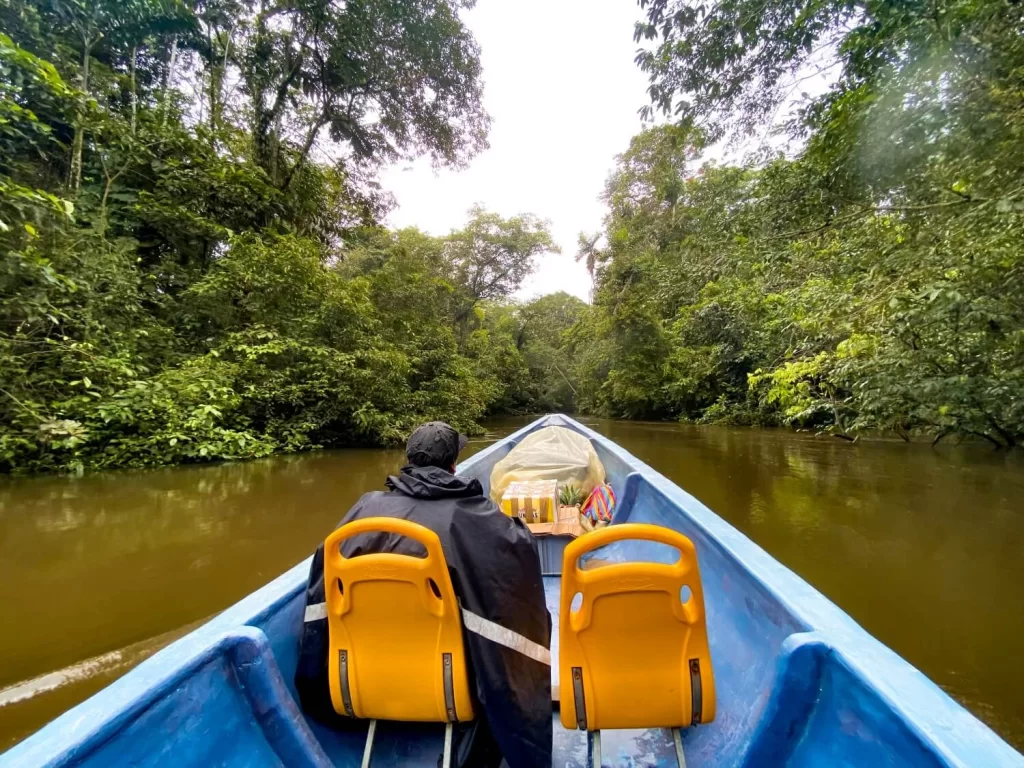
Final Thoughts on Getting from Quito to Cuyabeno
Whilst it would’ve been way easier to book the tourist bus straight to Cuyabeno Bridge, we didn’t actually mind taking the public bus option. It was definitely more of an adventure and since we travelled during the day we could enjoy the scenery.
Not to mention that it was nice to sleep in a bed and split an awfully long journey across two days. You know you’re in your thirties when you prioritise a good night’s sleep. Although we don’t regret getting the direct bus to Quito on the way back. Not having to think about the logistics of getting back to the city was a lovely change.
Have you ever visited the Cuyabeno Wildlife Reserve in Ecuador before? If so, how did you get there? What was your experience? If not, which option would you go for? Let us know in the comments below.
Now, let your adventure begin,

Our Top Travel Resources
Accommodation: For hotels we always use Booking.com and Hostelworld for hostels. We also book longer stays on Airbnb or Vrbo.
Flights: To find the best flight prices we always check Skyscanner, Google Flights or WayAway. Then we also check the airlines’ websites too for comparison.
Car Rentals: We use Discover Cars when we want to rent a car as it compares local, national and international companies.
Activities: If we book organised tours we always check either GetYourGuide or Viator.
Foreign Currency: Whenever we can we prefer to pay in local currency and for that we always use our Wise card. We can easily withdraw money from the ATM or pay by card at most shops and restaurants.
Travel Insurance: We never go anywhere without travel insurance. You never know what will happen on your trip, so good travel insurance like SafetyWing can protect you in case of injury, illness, theft and cancellations.
eSIM and VPN: To get data abroad we use Airalo which is an app that allows you to download a prepaid eSIM to your phone in over 190 countries. Make sure to have a VPN to avoid hackers accessing your personal data when using public WIFI. We use Surfshark which is the only VPN that offers one account on unlimited devices.

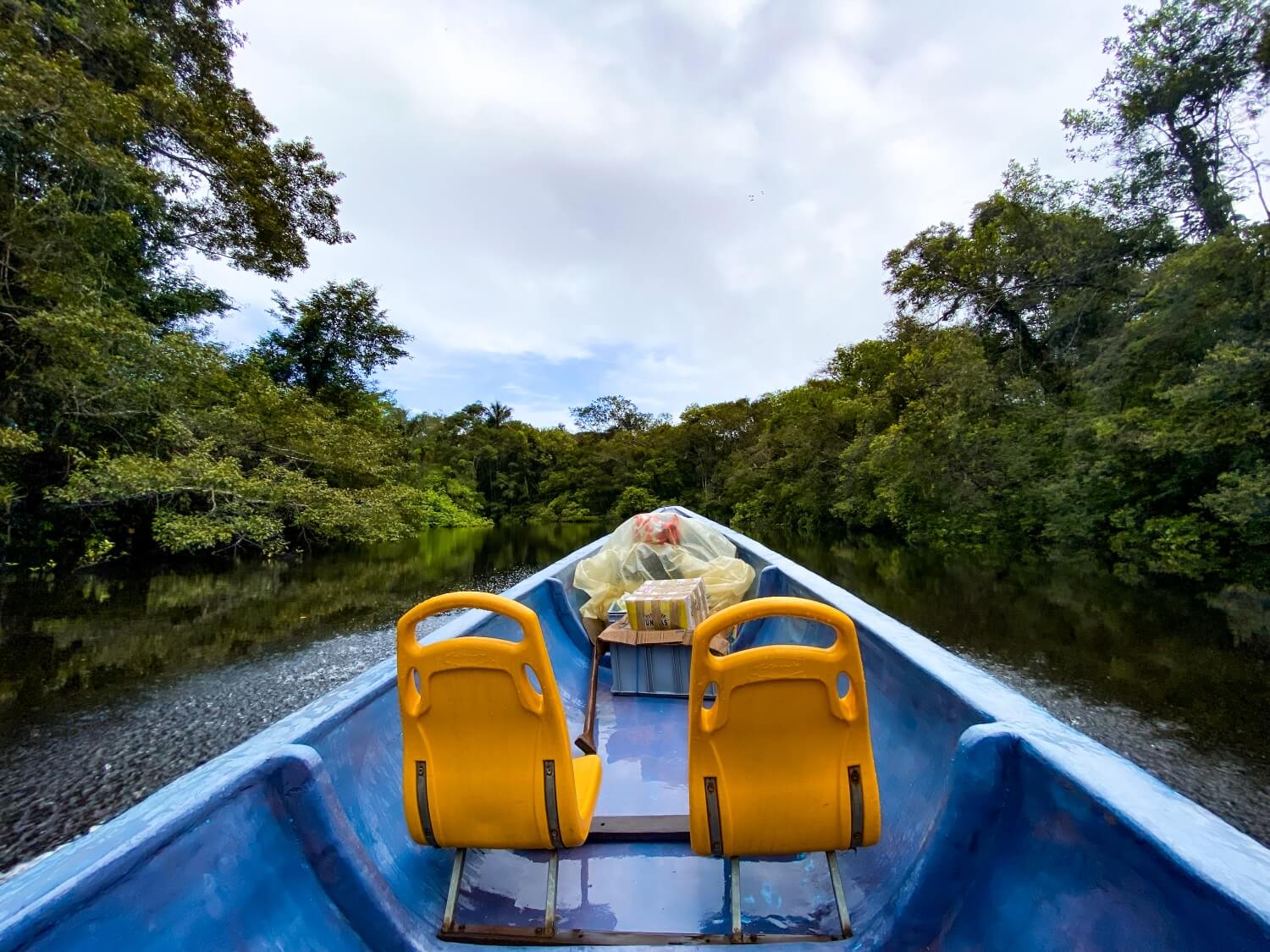


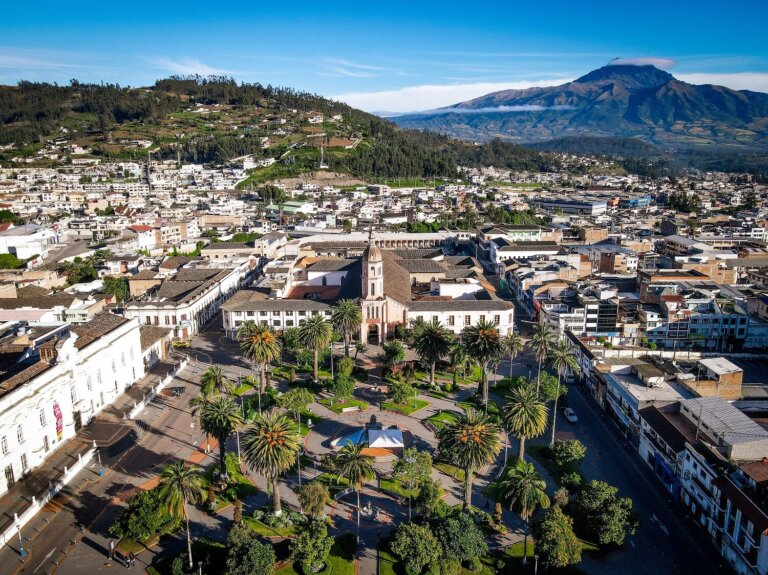

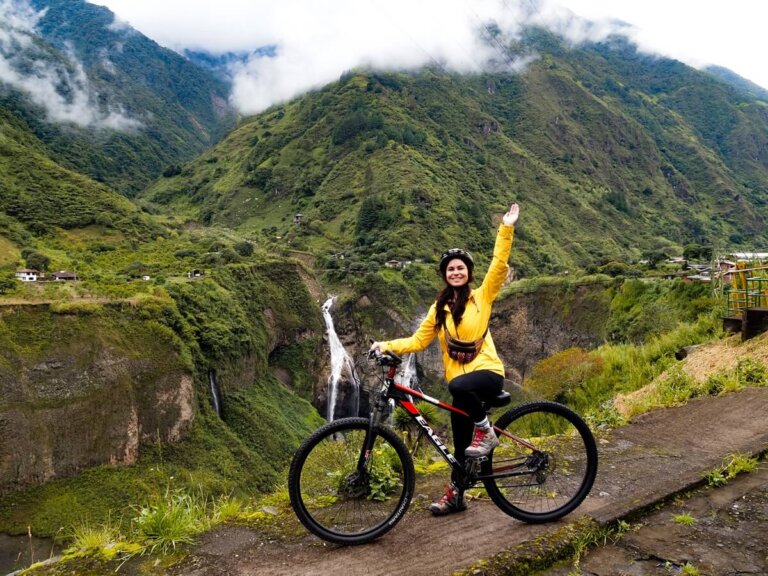

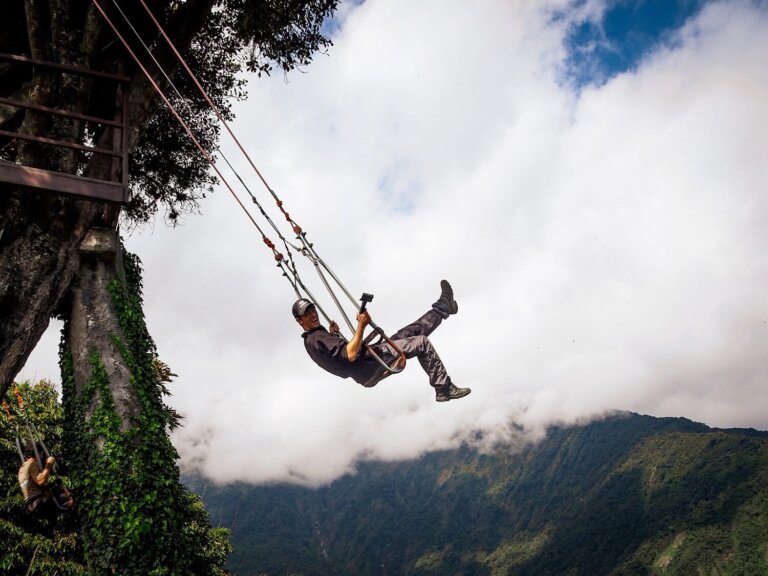
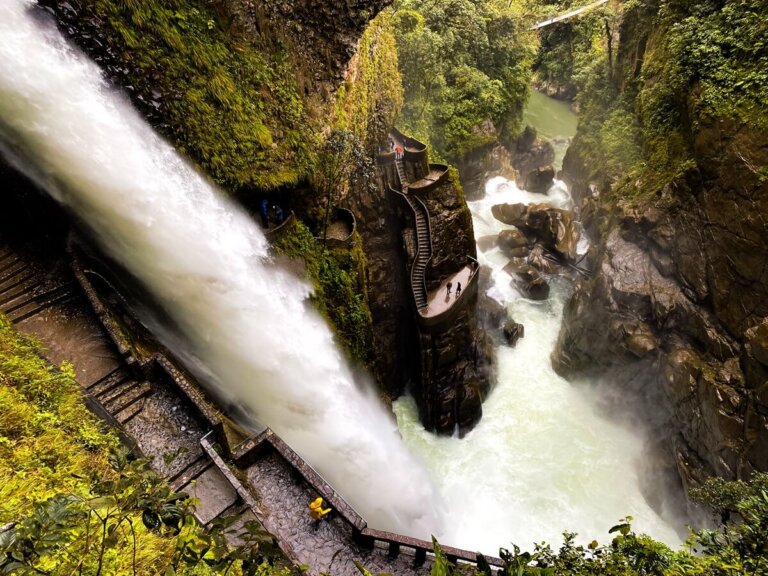
Hi Kitti just read both your Amazon blogs! What an experience!! It’s one of those places that everyone should try to do once in their lifetime.
Thank you Karan, we’re so happy that you enjoyed reading our posts. The Amazon is truly a wonderful place!